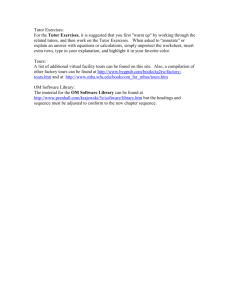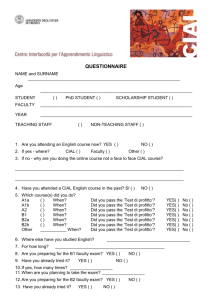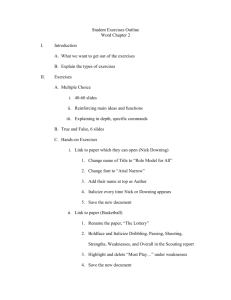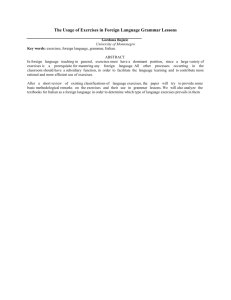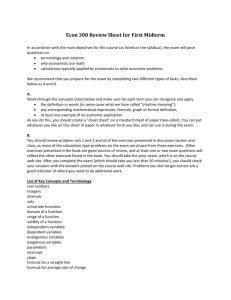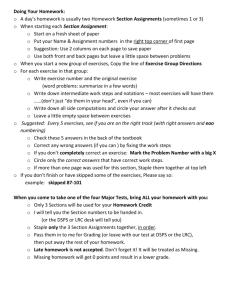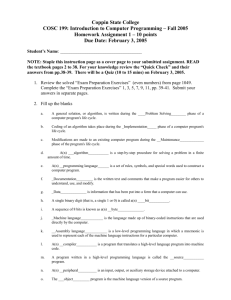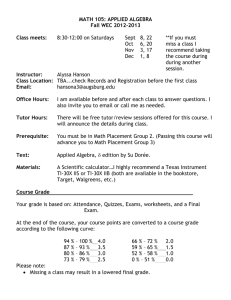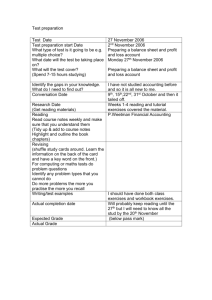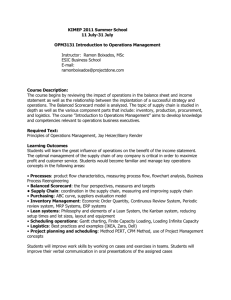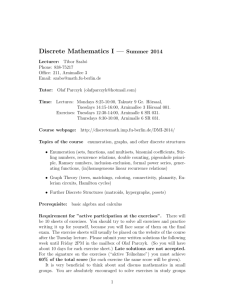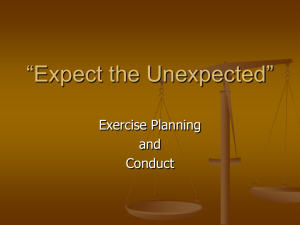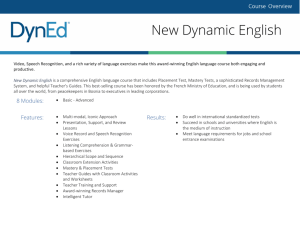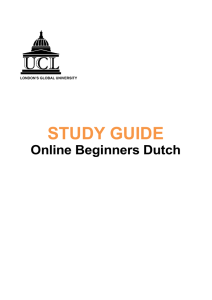TYCreative Writing Further 1 (OS617) 15-16.doc
advertisement
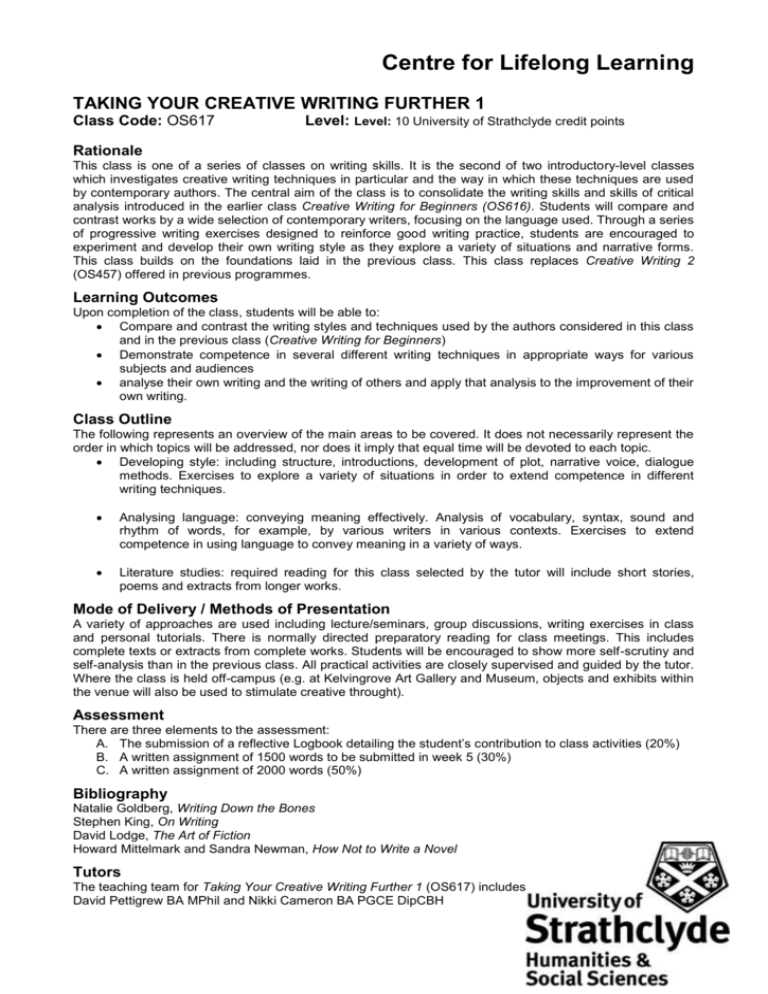
Centre for Lifelong Learning TAKING YOUR CREATIVE WRITING FURTHER 1 Class Code: OS617 Level: Level: 10 University of Strathclyde credit points Rationale This class is one of a series of classes on writing skills. It is the second of two introductory-level classes which investigates creative writing techniques in particular and the way in which these techniques are used by contemporary authors. The central aim of the class is to consolidate the writing skills and skills of critical analysis introduced in the earlier class Creative Writing for Beginners (OS616). Students will compare and contrast works by a wide selection of contemporary writers, focusing on the language used. Through a series of progressive writing exercises designed to reinforce good writing practice, students are encouraged to experiment and develop their own writing style as they explore a variety of situations and narrative forms. This class builds on the foundations laid in the previous class. This class replaces Creative Writing 2 (OS457) offered in previous programmes. Learning Outcomes Upon completion of the class, students will be able to: Compare and contrast the writing styles and techniques used by the authors considered in this class and in the previous class (Creative Writing for Beginners) Demonstrate competence in several different writing techniques in appropriate ways for various subjects and audiences analyse their own writing and the writing of others and apply that analysis to the improvement of their own writing. Class Outline The following represents an overview of the main areas to be covered. It does not necessarily represent the order in which topics will be addressed, nor does it imply that equal time will be devoted to each topic. Developing style: including structure, introductions, development of plot, narrative voice, dialogue methods. Exercises to explore a variety of situations in order to extend competence in different writing techniques. Analysing language: conveying meaning effectively. Analysis of vocabulary, syntax, sound and rhythm of words, for example, by various writers in various contexts. Exercises to extend competence in using language to convey meaning in a variety of ways. Literature studies: required reading for this class selected by the tutor will include short stories, poems and extracts from longer works. Mode of Delivery / Methods of Presentation A variety of approaches are used including lecture/seminars, group discussions, writing exercises in class and personal tutorials. There is normally directed preparatory reading for class meetings. This includes complete texts or extracts from complete works. Students will be encouraged to show more self-scrutiny and self-analysis than in the previous class. All practical activities are closely supervised and guided by the tutor. Where the class is held off-campus (e.g. at Kelvingrove Art Gallery and Museum, objects and exhibits within the venue will also be used to stimulate creative throught). Assessment There are three elements to the assessment: A. The submission of a reflective Logbook detailing the student’s contribution to class activities (20%) B. A written assignment of 1500 words to be submitted in week 5 (30%) C. A written assignment of 2000 words (50%) Bibliography Natalie Goldberg, Writing Down the Bones Stephen King, On Writing David Lodge, The Art of Fiction Howard Mittelmark and Sandra Newman, How Not to Write a Novel Tutors The teaching team for Taking Your Creative Writing Further 1 (OS617) includes David Pettigrew BA MPhil and Nikki Cameron BA PGCE DipCBH

